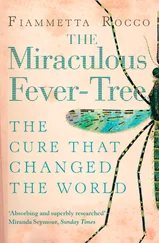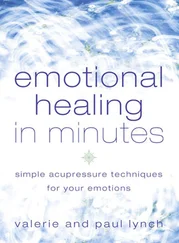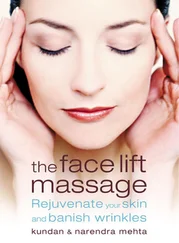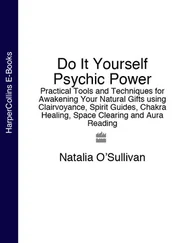It’s clear that our moods are deteriorating at unprecedented rates. What isn’t so clear is why. What is this tidal wave of emotional malaise all about? Are our lives so much more unhappy than they were a hundred years ago, or even ten years ago? It’s true that we’re facing some unprecedented adversity in the twenty-first century. But even if it is the high pressure, or the absence of family support, or the terrorist threat, for example, why are we now so unresponsive to traditionally reliable remedies like long vacations, psychotherapy, and spiritual counsel? Why are we forced to turn more and more to medication for solace?
In this book, I’m proposing that much of our increasing emotional distress stems from easily correctable malfunctions in our brain and body chemistry—malfunctions that are primarily the result of critical, unmet nutritional needs. More important, I am proposing a complete yet easy-to-implement nutritional repair plan that can actually start to eliminate what I call our “false moods” in twenty-four hours.
TRUE EMOTIONS VS. FALSE MOODS
Some negative feelings are unavoidable and even beneficial. They’re what I call “true emotions.” These true, genuine responses to the real difficulties we encounter in life can be hard to take. They can even be unbearable at times, depending on the kinds of ordeals we face. But they can also be vitally important. True grief moves us through our losses, true fear warns us of danger, true anger can defend us from abuse, and true shame can teach us to grow and change. These true emotions typically pass, or diminish naturally, and even when they get repressed or misdirected, they can usually be relieved through counseling. But when we suffer for no justifiable reason; when the pain of a broken heart doesn’t mend like a broken bone; when rest, psychotherapy, prayer, and meditation can make little impact—then we must suspect the emotional impostor, the meaningless biochemical error—the “false mood.”
Figuring out the difference between false moods and true emotions is the first step in your Mood Cure. Once you’ve mastered that, you can move on to eliminate the fraudulent feelings, of depression, anxiety, sadness, and irritability, that are interfering with your natural capacity to enjoy life.
Learning to Spot a False Mood
 When your boss cancels a long-scheduled vacation, you may get justifiably angry, and the next day you won’t have any trouble remembering what triggered your anger. At other times, you just seem to “snap” when your child forgets to take out the garbage. Later you say, “I don’t know what got into me.” The first case is a genuine emotion, the second is a definite counterfeit.
When your boss cancels a long-scheduled vacation, you may get justifiably angry, and the next day you won’t have any trouble remembering what triggered your anger. At other times, you just seem to “snap” when your child forgets to take out the garbage. Later you say, “I don’t know what got into me.” The first case is a genuine emotion, the second is a definite counterfeit.
 Thinking of a loved one who has died may make you teary, but if every sad or sentimental TV commercial brings you to tears, you’re in the grip of false pain.
Thinking of a loved one who has died may make you teary, but if every sad or sentimental TV commercial brings you to tears, you’re in the grip of false pain.
 PMS is notorious for its bad moods. If you’re reasonably even-tempered the rest of the month, but become teary and nasty before your period, you’re experiencing a clear-cut case of hormonally disrupted emotional balance—a false mood.
PMS is notorious for its bad moods. If you’re reasonably even-tempered the rest of the month, but become teary and nasty before your period, you’re experiencing a clear-cut case of hormonally disrupted emotional balance—a false mood.
 We all make mistakes and beat ourselves up from time to time. But if you are finding fault with your behavior or appearance almost every day, it’s likely that false feelings of low self-esteem are responsible.
We all make mistakes and beat ourselves up from time to time. But if you are finding fault with your behavior or appearance almost every day, it’s likely that false feelings of low self-esteem are responsible.
You shouldn’t have to live with these kinds of distorted moods on a regular basis. It’s like having an engine that sputters, preventing you from having a smooth emotional ride. When your brain’s emotional equipment needs a tune-up, you get clues: you don’t sleep well, you worry too much, you start feeling overwhelmed, you lose your enthusiasm or your ability to concentrate. You might also start depending on chocolate, wine, or marijuana to get some relief. If you experience these kinds of symptoms frequently, you may have just come to accept them, assuming them simply to be unfortunate features of your basic personality. But chances are you’re wrong. Now you have an opportunity to discover your true emotional nature.
The Primary Cause of Your False Moods
Your brain is responsible for most of your feelings, both true and false. In concert with some surprisingly brainlike areas of your heart and gut, it transmits your feelings through four highly specialized and potent kinds of mood molecules. If it has plenty of all four, it keeps you as happy as you can possibly be, given your particular life circumstances. But if your brain runs low on these mood transmitters—whether because of a minor genetic miscue, because it’s used them up coping with too much stress, or because you aren’t eating the specific foods it needs— it stops producing normal emotions on a consistent basis. Instead, it starts hitting false emotional notes, like a piano out of tune.
After more than thirty years of intensive, worldwide investigation, most of the false moods and their causes have been identified by one of the fastest-growing fields of science—neuroscience, the field that studies the workings and effects of the brain. Drug companies have been using this information to create products that can give our emotional equipment a quick charge. But that’s not the same thing as a real repair job. Fortunately, the emotional tune-up that we need so badly now is readily available. In fact, the repair tools we need for this crucial effort are shockingly simple. They’re specific foods and nutrient supplements that are so exactly what the brain needs that they can begin to correct emotional malfunctions in just twenty-four hours.
HOW I DISCOVERED THE MOOD CURE
I am the director of a clinic that’s been doing nutritional mood repair for over fifteen years, but I’ve actually been a professional dealing with emotional disorders and mood problems since 1975. Early in my career I worked in residential psychiatric settings; later I worked with individuals and families, led intensive therapy groups and workshops, and ran treatment programs for adults and adolescents with addictions and eating disorders. Now I run my own clinic, Recovery Systems, in Mill Valley, California, just across the Golden Gate Bridge from San Francisco.
In 1980, as director of my first counseling program, I began to suspect that poor nutrition was playing a role in the cases that did not respond to our intensive programs of psychotherapy and spiritual support. Our less successful clients were often “emotional eaters.” They either consumed lots of cookies, ice cream, chips, and fast food or skipped meals altogether and drank lots of coffee and caffeinated sodas. I started hiring nutritionists to explore the possibility of a food-mood connection, and we soon realized that we were on the brink of a powerful breakthrough. Clients who could be persuaded to eat plenty of protein and fresh vegetables three times a day and avoid caffeine, sweets, and refined starches, like white bread and pasta, felt much better emotionally (as well as physically). When they ate well, even those who had major psychological work to do were able to make steady advances in counseling with much less anguish and backsliding. However, the clients who did not make the nutritional changes—despite new communication skills, exercise, long vacations, and moderate work hours—did not do nearly as well.
Читать дальше
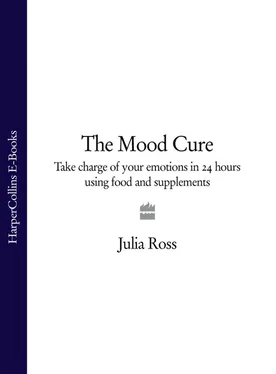
 When your boss cancels a long-scheduled vacation, you may get justifiably angry, and the next day you won’t have any trouble remembering what triggered your anger. At other times, you just seem to “snap” when your child forgets to take out the garbage. Later you say, “I don’t know what got into me.” The first case is a genuine emotion, the second is a definite counterfeit.
When your boss cancels a long-scheduled vacation, you may get justifiably angry, and the next day you won’t have any trouble remembering what triggered your anger. At other times, you just seem to “snap” when your child forgets to take out the garbage. Later you say, “I don’t know what got into me.” The first case is a genuine emotion, the second is a definite counterfeit.

